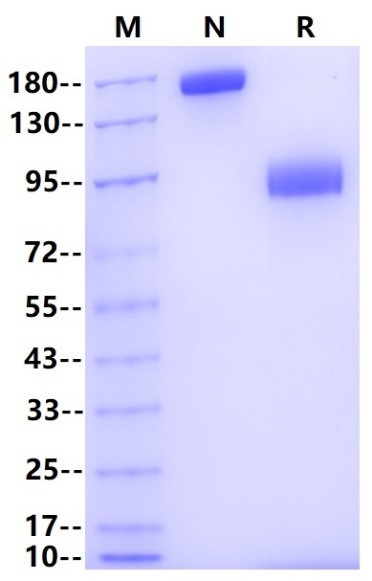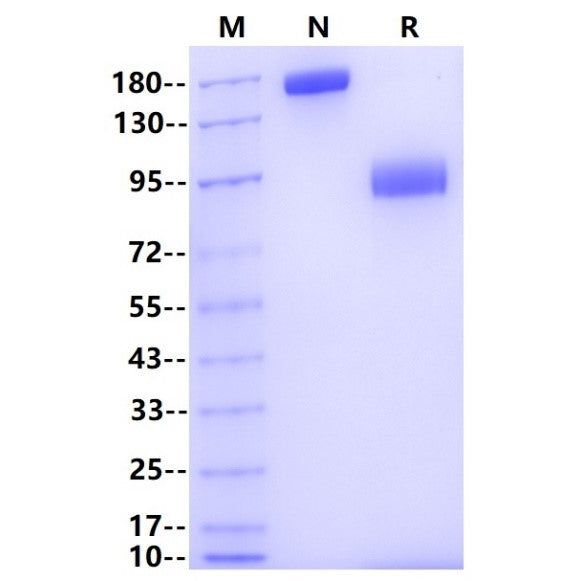Product Details
Product Details
Product Specification
| Species | Human |
| Accession | Q9Y336-1 |
| Amino Acid Sequence | Gln18-Gly348, with C-terminal Human IgG Fc |
| Expression System | HEK293 |
| Molecular Weight | 90-75 kDa(Reducing) |
| Purity | >95%, by SDS-PAGE under reducing conditions |
| Endotoxin | <0.1EU/μg |
| Conjugation | Unconjugated |
| Tag | Human Fc Tag |
| Physical Appearance | Lyophilized Powder |
| Storage Buffer | PBS, pH7.4 |
| Reconstitution | Reconstitute at less than 1 mg/mL according to the size in ultrapure water after rapid centrifugation . |
| Stability & Storage | · 12 months from date of receipt, lyophilized powder stored at -20 to -80℃. · 3 months, -20 to -80℃ under sterile conditions after reconstitution. · 1 week, 2 to 8℃ under sterile conditions after reconstitution. · Please avoid repeated freeze-thaw cycles. |
Background
Sialic acid-binding immunoglobulin-like lectins (Siglecs)1 are transmembrane sialic acid-binding proteins of the immunoglobulin (Ig) superfamily characterized by the presence of an N-terminal V-set Ig-like domain and variable numbers of C2 set domains (1). The first Siglecs to be characterized were Siglec-1, Siglec-2, Siglec-3 and myelin-associated Siglec-4 which share ∼25–30% sequence identity within the extracellular regions. Recent studies have uncovered the existence of a cluster of genes on human chromosome 19q13.3-4 that encode novel Siglecs highly related to CD33. This CD33-related subgroup includes Siglecs-3, -5, -6, -7, and -8, each of which share ∼50–70% sequence identity. These differences in expression and ligand binding suggest that each Siglec mediates a specific, nonredundant function in hemopoietic cell biology. Siglec-9 is ∼80% identical in amino acid sequence to Siglec-7, suggesting that the genes encoding these two proteins arose relatively recently by gene duplication. similar to Siglec-7, Siglec-9 recognized sialic acid in either the α2,3- or α2,6-glycosidic linkage to galactose. Using a specific mAb, Siglec-9 was found to be expressed at high or intermediate levels by monocytes, neutrophils, and a minor population of CD16+, CD56− cells.
Picture
Picture
SDS-PAGE



